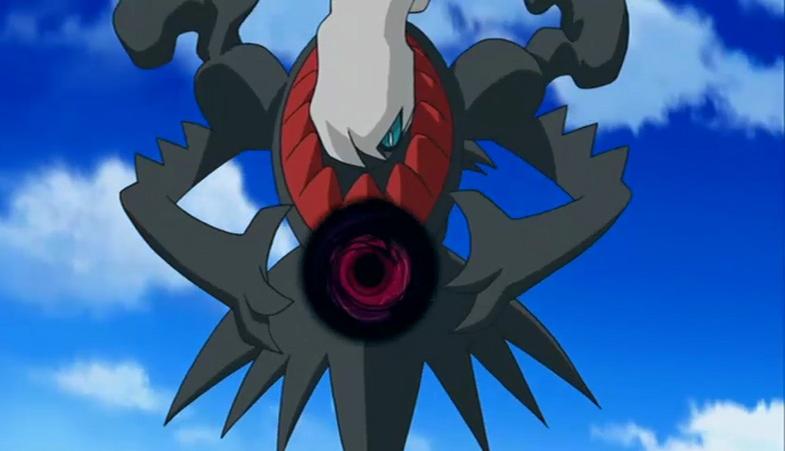It's been a while since I last posted a Regional Differences article covering the Diamond and Pearl era of the TCG. In Part 4, I examined how corporate synergy between the TCG and the movie "The Rise of Darkrai" created a plethora of regional differences spanning the West's Secret Wonders, Great Encounters and Majestic Dawn expansions, and the Japanese DP3 and DP4 sets. You can read the previous article by clicking here if you need a refresher.
The next sets in the block, "Legends Awakened" in the West, and "Cry from the Mysterious" and "Temple of Anger" in Japan, brought things back into alignment between the East and West, with a few notable exceptions.
 |
| MFW "Cry from the Mysterious" is the accepted translation. |
DP5 was released in Japan on March 14, 2008. Like Moonlit Pursuit and Dawn Dash, DP5 was composed of two subsets: Cry from the Mysterious and Temple of Anger. Each subset contained a total of 65 cards, all of which were exclusive to each subset. In other words, unlike Moonlit Pursuit and Dawn Dash, in which a handful of cards were available in both booster subsets, all of the cards in Temple of Anger could only be obtained in Temple of Anger packs, and vice versa with respect to Cry from the Mysterious. Each subset contained 15 Rares, 8 Holos, and 3 LV. X ultra rare cards.
The Western version of DP5, Legends Awakened, was released on August 20, 2008. At the time of its release, Legends Awakened was the third largest set in the English TCG, weighing in at an impressive 146 cards. Legends Awakened included the 130 cards from DP5, along with 16 cards from Japan's Heatran vs. Regigigas Deck Kit, a complementary product released alongside the DP5 booster sets. The Deck Kit contained a number of unique cards, most notably Gliscor LV. X and Mewtwo LV. X, that could not otherwise be obtained in the DP5 booster sets.
| Heatran vs. Regigigas Deck Kit. See more at http://bulbapedia.bulbagarden.net/wiki/Heatran_vs_Regigigas_Deck_Kit_(TCG) |
Overall, there are not many differences between the English and Japanese releases of these sets. Nearly all of the English cards can be found in either the DP5 subsets or the Heatran vs. Regigigas Deck Kit. That being said, there are still a handful of regional differences worth highlighting.
1. Porygon Z LV. X
The most glaring difference between the sets is the inclusion of Porygon Z LV. X in Temple of Anger. In the English TCG, Porygon Z LV. X was originally released in Majestic Dawn. In Japan, the card was originally printed in Temple of Anger, and later received a DP-P promotional card variant with alternate artwork. The English version of the card in Majestic Dawn uses the Japanese promotional card's artwork instead of the original artwork used in Temple of Anger. The Temple of Anger artwork was not released in the English TCG and, as a result, remains a Japanese exclusive to this day.
| Temple of Anger print (Japanese exclusive artwork) |
| Majestic Dawn print (using artwork from the Japanese promo version of the card) |
Like previous sets in the Diamond and Pearl block, certain cards had their printed rarities altered between the Japanese and English releases. In Japan, Castform, Catform Rain Form, Castform Snow-cloud Form and Castform Sunny Form were all printed as rare cards in Cry from the Mysterious. These cards were changed to Uncommons for the English release of Legends Awakened.
| Does Castform have testicles? Because it kind of looks like Castform has testicles... |
Heatran and Regigigas, the namesakes of each half deck, were each printed as Rares. Mewtwo, a card from the Regigigas half deck, was the only card from the Deck Kit printed as a Holo Rare in Legends Awakened. Mewtwo's counterpart in the Heatran half deck, Gliscor, was strangely printed as an Uncommon. It is unclear to me why PCI made these choices, perhaps it had more to do with the cards' competitive qualities than anything else, but it is somewhat unusual that the cards from the half decks received such disparate rarity treatment.
That's all for this week's installment of regional differences. As always, please let me know if you have any comments, questions or suggestions for revision.
I will update this post later with links to images of my completed sets of Legends Awakened, Cry from the Mysterious and Temple of Anger.















































